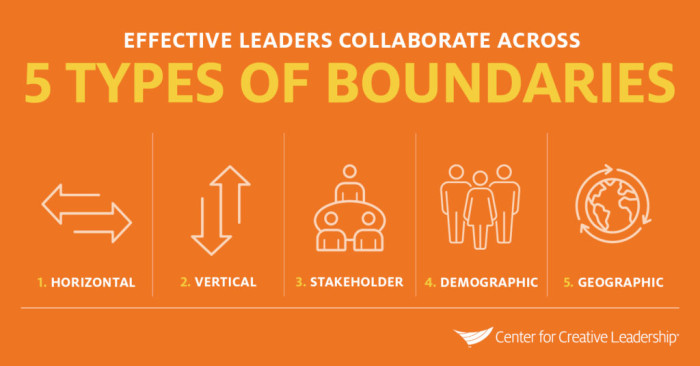Managing a product team requires a lot of roadmapping, goal-setting, problem-solving, and strategic thinking. But what about collaboration? If you can't work together and collaborate with your team, then delivering a successful product to the market will be hard, if not impossible.
A whole team needs to be able to communicate effectively and operate as a unit towards a common goal that they are invested in. Despite the fact that collaboration is mentioned by many as a key success factor, there is a lack of focus on tactics that actually drive the product team forward.
This article showcases five important collaboration strategies that can help you manage the relationships within your team more easily and achieve better results.
The 5 essential collaboration strategies that move the needle
The elements of collaboration can be categorized into two distinct segments:
Building and maintaining relationships
Completing tasks and achieving goals
Below, we list the key tactics and techniques that can bring your organization the biggest improvement in team management.
1. Create an environment for fresh ideas that get credit
Everybody has ideas. Some of them are good, some of them are bad, but most of them are never heard.
To ensure you’re building the best possible product that will solve just the right problems for your customers, you need a company culture and an internal environment that encourages new ideas. You can reward the best ones with implementation and credit the authors, but make sure not to discredit (and discourage) teammates who might have added a bad idea.
In an effective collaborative environment, your team should be able to suggest ideas and provide feedback on others’ ideas without the fear of judgment. Implementing great ideas suggested by your team, especially if they come from cross-functional organization-wide collaboration, is an excellent way to boost inclusiveness, a sense of ownership, and a willingness to strive for the best results.
To create such an environment, encourage your team to think outside the box. This has become a cliché, but changing a perspective and coming up with not-so-obvious solutions can actually help your team a lot.
It’s not easy to detach from our cognitive biases, pre-built agendas, and common misconceptions, so you can start by gathering your team and going back to the root of the thinking-outside-the-box approach – the Nine-Dot Problem.
The Nine-Dot Problem is a well-known exercise in lateral thinking where participants are presented with a set of dots arranged in a 3x3 grid. The challenge is to connect all nine dots, without lifting the pencil from the paper, using the fewest possible number of straight lines.
Print out the dots and try it out with your team.

(Source)
You can use a brainstorming session to come up with as many ideas as possible. Of course, don’t stop at the Nine-Dot Problem. Organize creative brainstorming sessions whenever you can because that’s where communication and visual collaboration come into play.
Another way could be to encourage the team to act on ideas outside of a group setting, which would provide more individual freedom and responsibility. This puts an even greater emphasis on your communication capabilities and giving feedback, without anyone taking it personally if the idea turns out to be bad.
Either way, having the openness to new thinking is an excellent tactic to get the teamwork going, and level up the collaboration between everyone in the product team.
2. Enable a willingness to open communication and honest feedback
Open communication is a key factor in any team environment, whether in SaaS, startups, or enterprise-level corporations. It’s a critical component that simultaneously ticks the boxes of both building relationships and achieving goals.
Open communication allows everyone to have a voice and feel like they can contribute to the team, solve issues effectively, and respond to changes in a better way. It also allows the team to feel safe enough to speak their mind, and this ties in with the previous point about an open environment for ideas.
Having a culture of honest feedback means that there will be no inside secrets, no one will be left out of the loop, and no one will feel threatened by what another team member has to say. And bringing this full circle, honest feedback also contributes to openness, which generates more ideas, deeper involvement, and meaningful conversations.
The feedback goes in all directions – from a manager to a team member, from a team member to a manager, and among team members. It needs to be honest, whether it’s positive or constructive. So the best advice here is – don’t sugarcoat what needs to be said.
And this is, yet again, where fine-tuning the collaboration tactics will aid the delivery of the feedback, without the receiver putting up a defense or taking it personally. When giving feedback that can be helpful to multiple people you can even consider creating training videos that can be viewed by everyone. This makes giving feedback seem like training and not directed at anyone in particular.
Instead of only managing your team vertically, break down the silos and collaborate with other teams from your organization. Working in cross-functional teams will rise up the potential for diversity, better product decisions, and new forms of collaboration.
So, span your boundaries. As defined by the Center for Creative Leadership, boundary spanning is “when leaders can work with a great variety of people from differing positions, backgrounds, and locations”.

(Source)
3. Define clear goals and know what to expect from them
There's a lot of work to be done when you’re building and launching a SaaS product, but results can be hard to achieve in a workplace where everyone is doing their own thing. In such a case, everyone is always in a rush to get things done, ideas are thrown around in a short amount of time, and a lot of different product management software, marketing tools, and growth strategies are being used.
This can cause confusion and conflict among the team, but if you want a team that works well together and gets things done, you just need to follow a few simple rules:
Define clear goals: Your team needs to know what they are working on, and why. For example, you can use the SMART goals framework for this. Try to always include the bigger picture to explain how product goals align with the business strategy.
Make a timeframe for tasks: Be sure that everyone on the team knows when certain things should be completed. This way, there are no surprises down the line. Be sure to calculate the time for potential changes along the way, so having a flexible product roadmap is the way to go.
Set clear expectations: Ensure that all your team members have a clear understanding of their roles and responsibilities, so that, once again, there won’t be any surprises.
To be frank, if you put yourself in the shoes of a teammate when the goals are not clearly defined, you can understand how hard it would be to be productive or motivated to finish a task. This is especially true for companies with thousands of employees, but this can also be an edge for SaaS businesses and startups.
When you have a team where everyone can see and feel that what they are doing actually contributes to a great product experience for your users, you unlock a new level of collaboration.

Get the Right Features on Your Product Roadmap
Discover how to gather specific feedback that guides your roadmap with microsurveys—check out our on-demand webinar.
4. Involve everyone in solving problems to encourage progress
It can be quite frustrating to work with someone who isn’t contributing. Not only someone who is not doing their job the right way, but also someone who isn’t helping the team to solve problems and move the entire product forward.
In a product team that’s responsible for building and shipping a product to customers, this is a serious threat to the entire team’s effort. For example, you can find yourself with a team of several people who are all doing their jobs, but no one is helping anyone else do theirs. Or, there could be only one or two people who are continuously assisting in solving product problems, while others are not engaged.
So how can we circumvent this? By taking the previous three strategies into account.
Once you have a product team that is not afraid to pitch new ideas, openly speak about challenges, give and receive honest feedback, and work towards clearly defined goals, it’s when you have a collaborative team ready to contribute to problem-solving, strive for progress, and ultimately launch the best possible product to customers.
Once again, this is where brainstorming sessions can be really helpful, too. To better understand the problem you’re solving, you can use the Problem Framing Playbook, developed by Atlassian. Here’s an example of what it could look like.

(Source)
5. Negotiate a win-win outcome for achieving the goals
If you’ve read this far, by now you understand that each of these strategies ties into each other in a synergistic way. And this last tactic is the final piece of the puzzle.
When you set clearly defined goals that are not just a huge win for the company and your customers, but also have some win for the team, you’ll set the ground for a well-rounded collaborative experience.
What would be a typical win-win situation? When everyone on the product team is invested in the product that you’re building, either through their own ideas that got implemented or through their work that has had a meaningful impact on the end result (while also getting full credit for it).
And if you’re managing a remote team, here’s an overview of the key strategies for success.

(Source)
What about collaboration skills you should foster as a product manager?
Humans are complex and there are a ton of skills that goes into managing a team for peak performance and a common goal.
There is advice thrown around such as “work on your empathy skills”, but it’s not that simple without a deep understanding of human psychology and self-development. Anyone can tell you to be more empathic, but how do you actually do it? How do you implement it? And how do you measure if it has an impact on your team’s collaborative performance?
That’s why we’ve kept this list of actionable tactics that you can implement today. Because if you can’t measure it, you can’t improve it (not in a practical sense at least). However, there are still important collaboration skills you should hone. Let’s take a look at the top three of them.
Skill #1: Adaptability
One of the biggest challenges you'll face when building a product is managing the relationships and balancing the different types of personalities that exist on your team. You could also be working together with a multi-national team, spread across the globe.
Being able to adapt quickly to different ways of collaboration, asynchronous communication, and various types of collaboration tools, yet still efficiently get the job done, is one of the essential leadership skills you’ll need to improve the performance of your team.
Skill #2: Willingness to change
People have a natural aversion to change, but change is inevitable. That's why it's so important to be more willing to test things out, even if it’s not how you usually work.
For successful teamwork and collaboration:
Keep your mind open to new opportunities
Be ready to test out new ways of working
Be prepared to pivot when the change happens
This kind of attitude will help you to embrace the change, revisit your goals if needed, and drive your product further.
Skill #3: Active listening
A great way to start creating a more collaborative environment is to actively listen to your teammates. This brings us back to open communication and honest feedback, but there’s more to that.
Stay actively engaged in any conversation, listen carefully, and reflect back on what’s being said, without judgment. How well you listen has a great impact on the quality of your relationship with the team.
Overall, since we are talking about skills that are not inherent in anyone just by default, you’ll have to gain experience. You gain experience by doing, so a great way to be better at collaboration is to implement small actionable steps, assess what happened, and adjust from the feedback. Rinse and repeat until you feel comfortable with your collaboration skills.
A Wrap-Up
If you’re managing a product team, then you know how important it is to have a great team behind you. It’s your responsibility to provide direction and guidance to your team, while also making sure that the team is fully engaged with the work and motivated to complete the tasks.
And if you’re an involved team member, pitching your ideas to the acting manager can be a great start for a better collaborative environment.
Either way, I hope that this article provided you with some solid collaboration strategies that you can use to improve teamwork, starting now!

Weekly advice to make your product stick 💌
Be the first to get the latest product best practices and resources
This article is written by Chris Starkhagen, an engineer turned entrepreneur, who is bringing tech expertise to digital marketing. On ChrisStarkhagen.com, he writes about the best tools for content creation, productivity, mindset, and raw marketing advice that works.






